One of Australia’s rarest plants is back from the brink
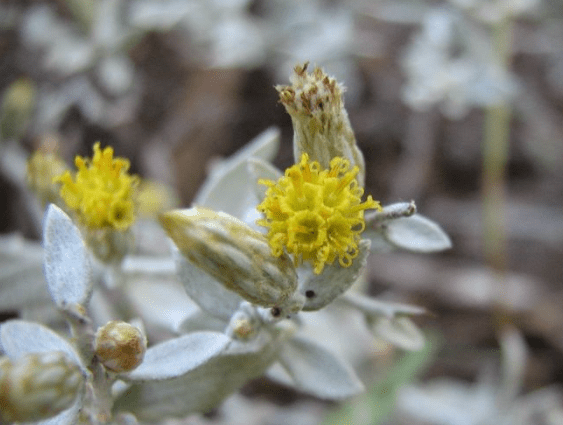
‘STRESSED’ IS THE word most commonly used to describe the plants of the River Murray floodplain, thanks to extended drought and the impacts of river water regulation.
But Tim Field, the wetland manager at Banrock Station, which is nestled on the Murray a two hour drive north-east of Adelaide, and his team have been working tirelessly to remedy this. With 322 plant species across the 1375ha wetland complex, there’s a lot to do.
“There are the river red gum and black box woodlands, which support the vulnerable regent parrot,” Tim says. “The samphire shrubland, which is a vital for waterbird habitat when flooded. And the lignum shrublands, typha sedgelands and aquatic herbalnds – all of these are important fish and frog habitat.”
But it’s a scrappy-looking, green/grey-coloured shrub that has captured Tim’s attention. Once believed to be extinct, the critically-endangered native spiny daisy is now blooming across Banrock and other parts of South Australia’s Riverland.
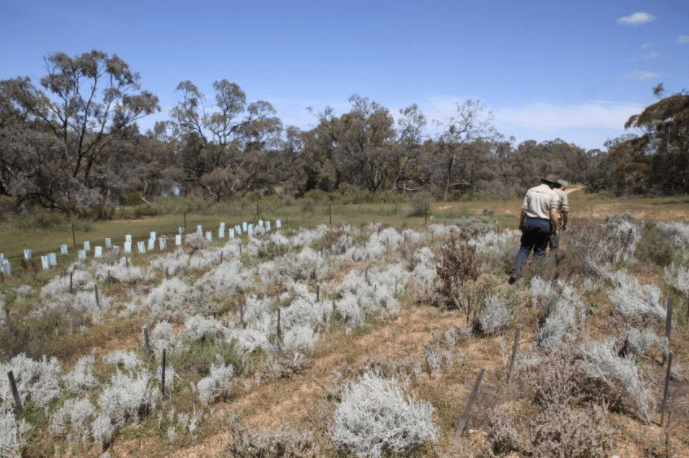
The program to replenish the species started at Banrock Station in the Riverland in 2014, funded by the Banrock Station Environmental Trust.
Tim says the program was designed to bring the small, prickly plant back from the brink of extinction, and to date has been incredibly success.
“It’s one of the rarest plants in Australia and on Earth,” says Tim, pictured below. “There are only six [genetic] individuals left in the wild.”
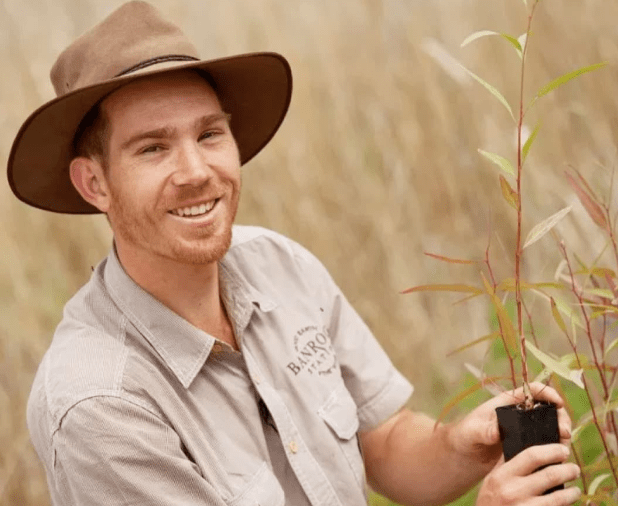
First recorded by Europeans during the Burke and Wills expedition in the 1860s, the spiny daisy was spotted again near Overland Corner in South Australia in 1910.
It was presumed to be extinct for many years before being rediscovered in 1999 – a farmer spotted a plant at the edge of his paddock in the state’s mid-north.
Tim says the 360 original cuttings taken from the mid-north and planted at Banrock Station have now exploded to about 1480 plants.
“We established three 20 x 20m plots for planting with material of each clone type,” he says.
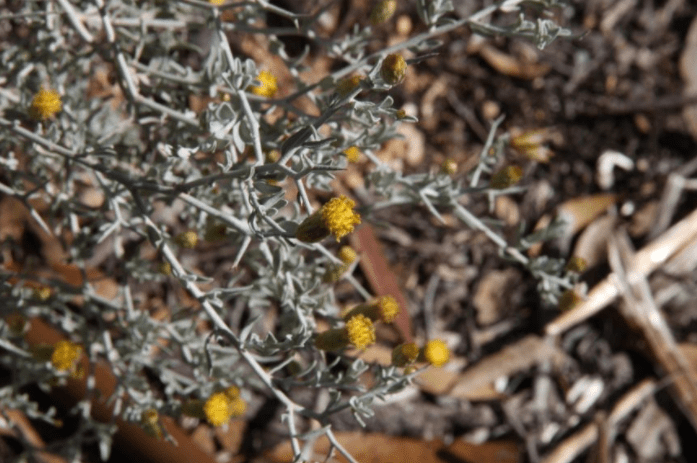
“For a plant that’s critically endangered, it’s remarkably good at looking after itself. We do a bit of upkeep in the form of weeding, and the original sites are fenced off to give them a bit of protection from kangaroos and things like that.
“On the whole, they seem to do a pretty good job of it themselves.
“Now that we have the plants established we’re planting them across the mallee landscape as part of our ongoing revegetation program.”
Conservation volunteers are also planting out the spiny daisy in as many different locations as possible, including parts of the mid-Murray region and elsewhere in the Riverland, in the hope the species won’t be destroyed by bushfires or drought.
“We hope the spiny daisy will eventually grow freely between the mid-north and Menindee Lakes in outback New South Wales,” Tim says.
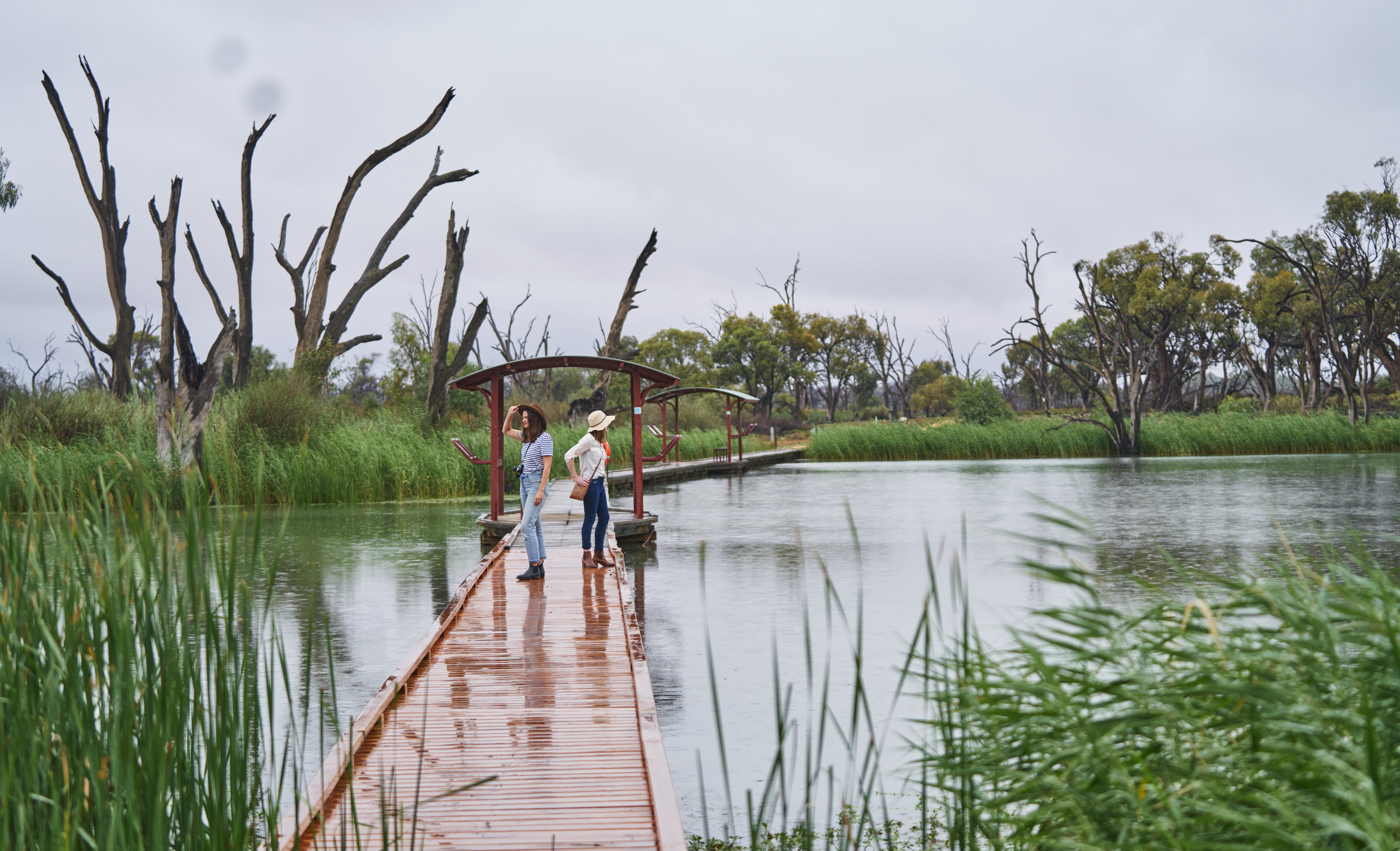
Where can you see the spiny daisy?
Visit Banrock Station’s Ramsar-listed wetland and wander its 8km of dedicated walking tracks and boardwalk. You’ll see majestic river red gums hugging the banks of the waterway. Stay awhile in this serene setting and absorb the sounds and sights of nature writ large – there’s seating and bird hides from which you can watch for birds (Banrock supports more than 138 species, including 14 species of waterbirds and wetland dependent species listed as threatened, and 85-plus species of woodland birds, eight of which are considered rare in South Australia). Look, too, for roos and wallabies – they’re among seven native mammals, 14 species of reptiles and eight amphibians that have been also been recorded on site.
“Over the years we’ve planted out thousands of native trees to help restore the wetland to its natural state,” Tim says. “We’ve created a thriving habitat for native plants and animals, and we’re exceptionally proud of that.”
Visit Banrock Station to learn more about its incredible conservation and restoration work. While you’re there treat yourself to a wine or grab lunch at the cellar door and wetland centre.


